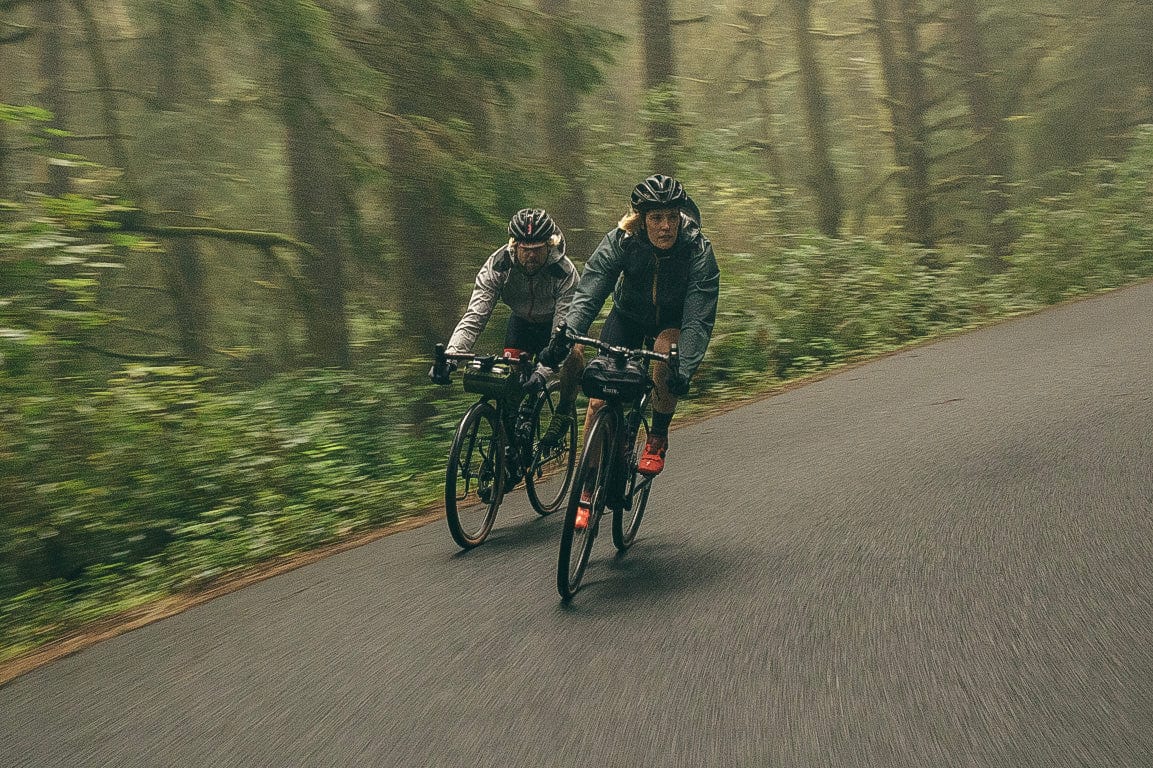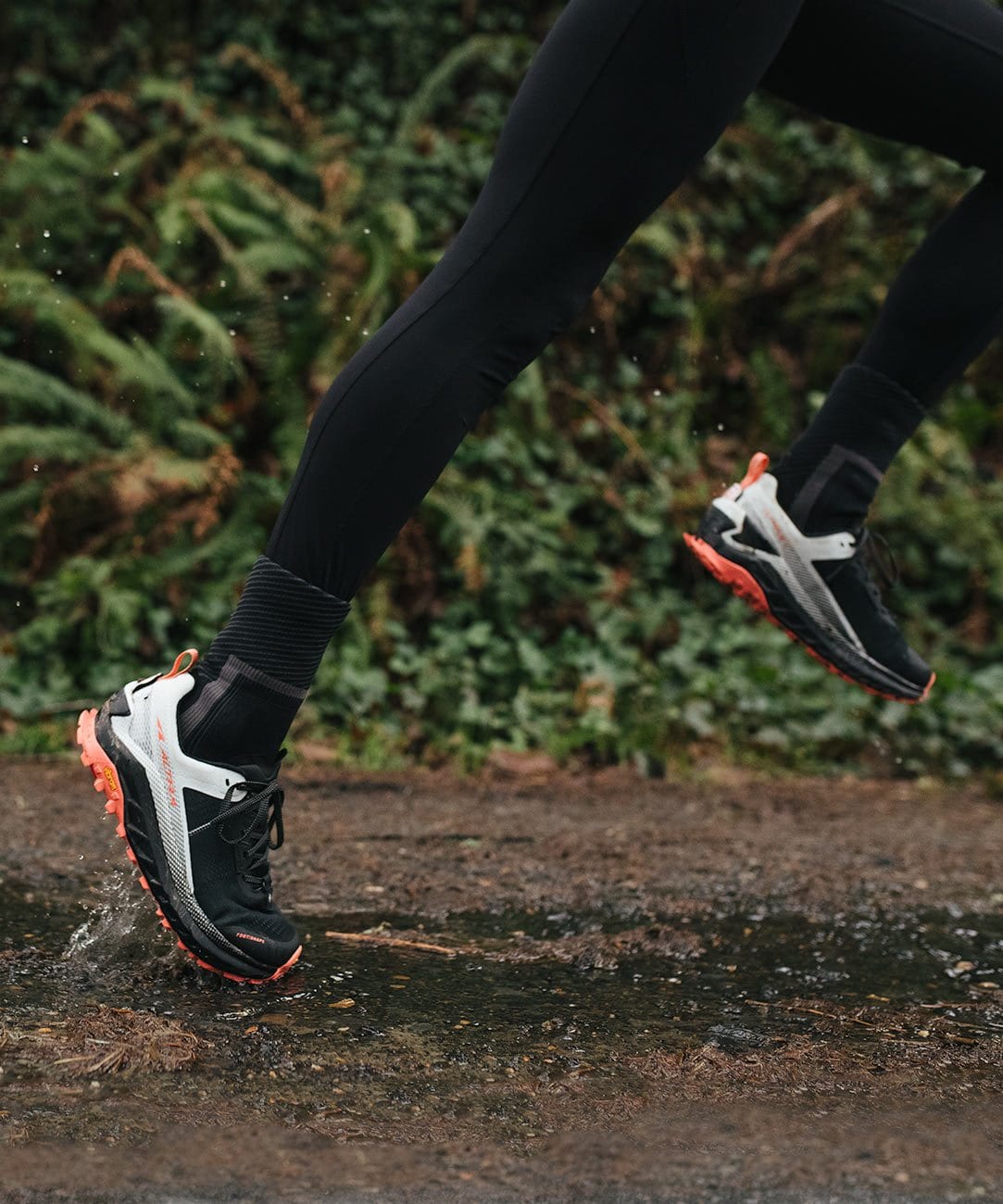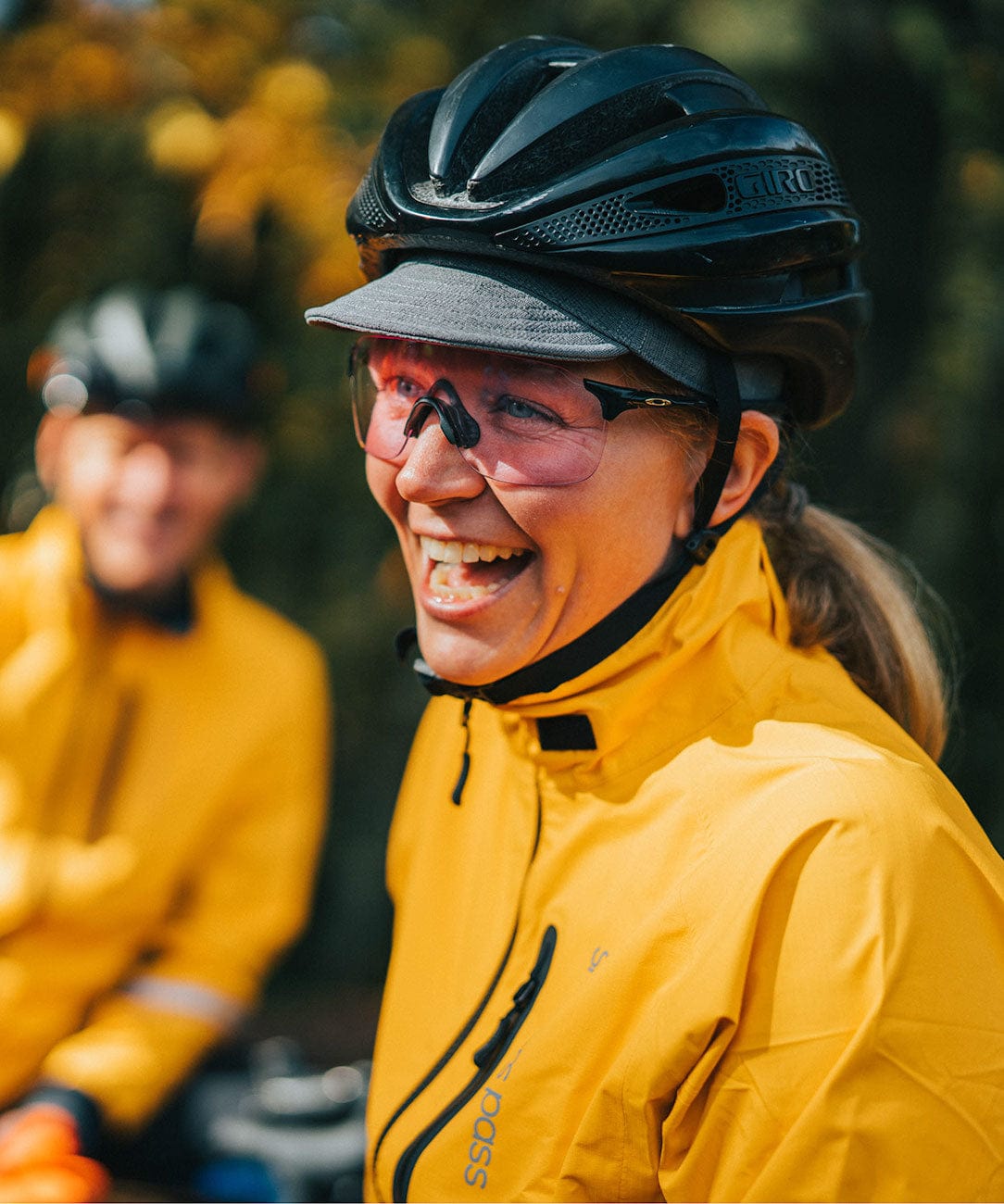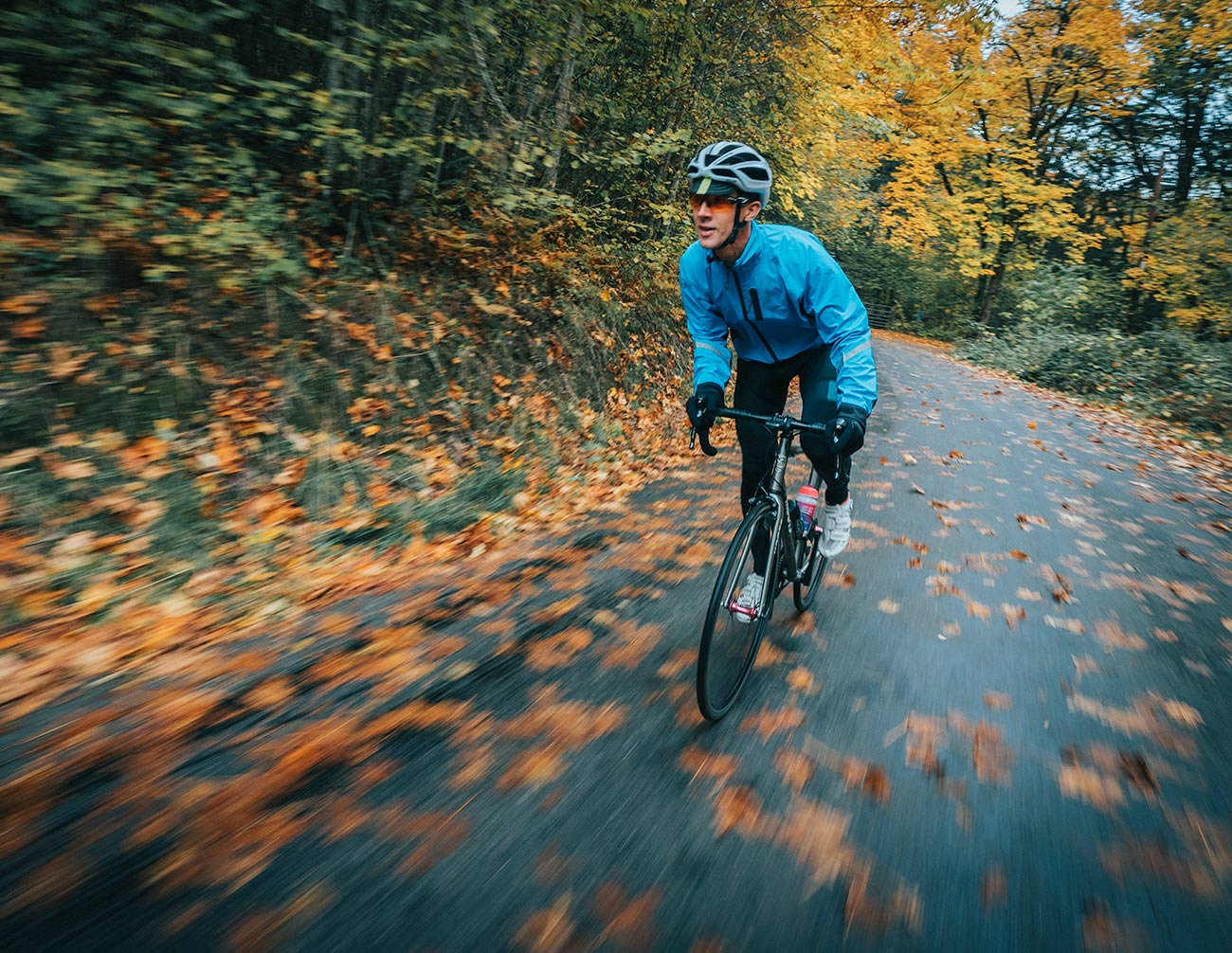The elements can be relentless and unforgiving, especially in the rain forests of the Pacific Northwest where Showers Pass is headquartered. For many months, puddles pool to depths that threaten sodden socks and wet work wear. Umbrellas you say? What are umbrellas? Waterproof apparel is a necessity here. That’s why it’s the perfect environment to develop and test some of the most effective waterproof apparel geared towards outdoor performance.
Let’s peel back the layers of waterproof technology so you can make an informed decision between 3, 2.5, and 2-layer waterproof fabrics and why you should choose one over the other.

3-Layer Fabrics: Rugged and High Performance
3-layer waterproof-breathable fabrics are common in high-end rainwear. As the name suggests, these fabrics are made from 3 layers that are laminated together. The waterproof-breathable membrane is sandwiched between an outer face fabric, typically made of durable nylon or polyester, and an inner lining that usually consists of lightweight Tricot fabric. Tricot fabric has excellent wrinkle resistance, and offers superior next-to-skin feel. It also helps prevent the fabric from clinging or feeling clammy, as well as protects the waterproof membrane from sweat and body oils that can negatively affect the performance and lifespan of the membrane.

3-layer constructions are the most durable relative to weight, and will usually offer the highest level of waterproof-breathable performance, which seems counterintuitive, as more layers would suggest less breathability. However, membranes that offer a high moisture vapor transfer rate (the amount of moisture capable of passing through a membrane) are more often used in these constructions. This makes them a good choice for use in winter and fall where one will experience prolonged exposure to harsh conditions.
Even though they’re slightly heavier, 3-layer fabrics can be strong performers in warmer climates, or for higher levels of physical exertion due to their breathability and tendency to feel less clammy or clingy when you break a sweat. They are however less packable and lightweight.
2.5-Layer Fabrics: Lightweight & Packable
2.5-layer fabrics share a lot of characteristics with 3-layer fabrics. However, instead of a fabric lining, a print is applied to the backside of the waterproof membrane. This print is the “half layer” in a 2.5-layer fabric. The print serves the same purpose as a Tricot lining, protecting the membrane and providing a more comfortable feel. While the printed half layer doesn’t do any of this as effectively as the fabric lining in a 3-layer garment, it does have some of its own benefits. Garments made from 2.5-layer fabrics tend to be very lightweight and packable, and they’re typically less expensive than their 3-layer counterparts.

A Jacket made from 2.5-layer fabric is a good choice whenever packability is a concern. Our Elements Jacket is a great jacket to reach for when there are showers in the forecast, but you don’t want to lug around a heavy duty winter jacket when the weather clears up. The same goes for commuting. In shoulder seasons, weather might be wet and cool in the morning but clear up by the time you ride home, so having a jacket that easily fits into your backpack or pannier can be a major plus.
2-Layer Fabrics: Budget Friendly & Lightweight
2-Layer fabrics are made by applying a membrane to the face fabric directly, with no lining or print applied. Frequently, this is done by coating the fabric rather than a lamination process. 2-Layer waterproof-breathable fabrics are highly packable and can offer the lightest weight, but usually this comes at the expense of durability and/or breathability. Often, a 2-layer jacket is seen as an emergency piece that will only be used when you need protection from the elements quickly and for a short period of time. The Pro Tech ST is a perfect example of this, as it packs down into itself for effective packability, while offering the least breathability given its 2-layer construction. Although you won’t find this in Showers Pass products, 2-layer fabrics are often coupled with a drop lining, a loose mesh fabric inside the garment that serves to protect the membrane. This also adds significant bulk to the garment. 2-layer fabrics are the least expensive to produce, so they are often found in more moderately priced garments.
Some two layer constructions reverse the traditional construction and place the membrane on the outside of the garment, with an ultra light lining on the inside. While this leaves the garment exposed to abrasion, it eliminates the need for hydrophobic coatings and can create a super light and packable garment.
The takeaways here come down to a decision between packability, durability, performance and budget. While a 3-layer jacket will be more waterproof-breathable and durable, they will on average be more expensive and less packable than a 2 or 2.5-layer garment. We suggest 3-layer garments for climates that experience more extreme weather, and for activities that require the highest level of waterproof-breathable performance. On the other hand, a 2.5-layer garment will be very packable and moderately priced, and will provide both waterproof protection and breathable comfort with the added benefit of taking up less space. However, they will be less durable in cases where extreme abrasion is a concern. For this reason, coupled with their construction, 2-layer jackets will be the most packable but won’t perform as well as a 3 or 2.5-layer garment with regards to waterproofness, breathability or durability.












